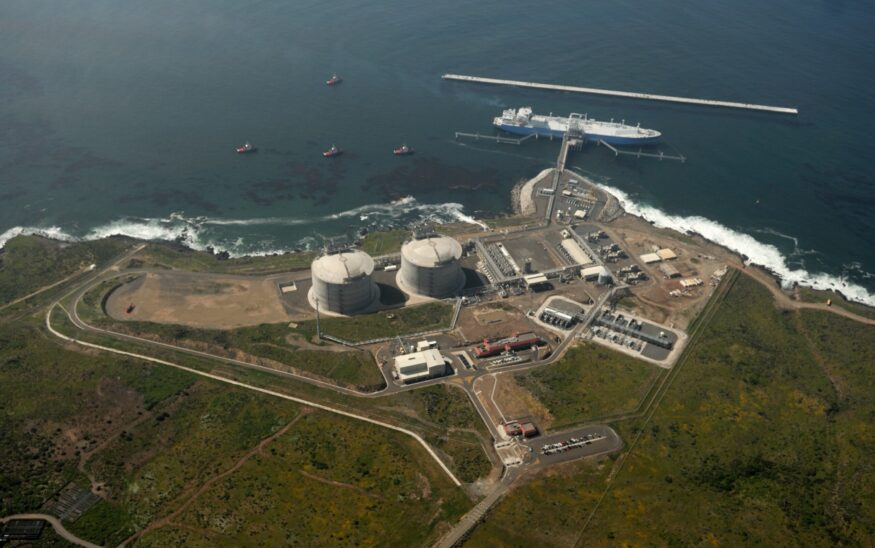Unlocking America’s Energy Security Begins in the West — Here’s Why
How Western States and Tribal Nations are paving the way for America's LNG potential.
David Blackmon //January 2, 2024//


Unlocking America’s Energy Security Begins in the West — Here’s Why
How Western States and Tribal Nations are paving the way for America's LNG potential.
David Blackmon //January 2, 2024//
History has shown time and again that rising conflicts in distant lands can negatively impact energy security here at home. Such conflicts can be easy to ignore until they hit consumers directly in the form of higher energy costs. With the U.S. currently engaged now in wars in Europe and the Middle East and with China increasingly saber-rattling about its desire to absorb Taiwan, the potential for spiking energy prices grows with each passing day.
Imports of liquefied natural gas (LNG) have become a critical factor in ensuring energy security for major economic powers in Asia and Europe as global energy markets have evolved across the 21st century. Both Japan and South Korea must import almost all their natural gas needs, and China, Taiwan and India also bring in large volumes of LNG each day to help displace coal in their power grids and energize their economies.
READ: Capitalizing on Colorado’s Homegrown Energy
In recent weeks the international flows of this global commodity have been complicated by the strife in the Middle East. Concerns are rising that escalation of the conflict could inhibit LNG flows from Qatar, which ranks as one of the three biggest exporters of LNG, along with Australia and the United States. Located along the western shore of the Persian Gulf, Qatari exports must make their way through the Strait of Hormuz, the strategic choke point that serves as the gateway to the global marketplace.
Any obstruction in the free flow of shipping through the Strait would immediately create a crisis in the world’s supply of both oil and LNG, causing prices to spike. A significant disruption would impact not only the countries in Asia and Europe that rely on Qatar’s LNG supplies, but every other natural gas-consuming nation as remaining available volumes become reallocated.
Major economic powers in Europe are also at risk. European giants like Germany and the United Kingdom saw their needs for imported LNG skyrocket in 2022, after Vladimir Putin’s invasion of Ukraine. Sanctions invoked on Russia by the United States, the EU and NATO, combined with the blowing up of the Nordstream I and Nordstream II pipelines, shut off Russian exports of natural gas into Europe via pipeline, creating an unprecedented supply crisis. Germany, Britain and others have turned to other major suppliers, like Qatar, to fill their needs.
What it all emphasizes is a rising need to increase the capacity for exporting LNG from other, more stable parts of the world.
READ: Who Will Lead Colorado’s Energy Future?
Fortunately, the United States has ample capacity to dramatically increase its LNG export capabilities in the coming years. America is home to many of the biggest underground reservoirs of natural gas on Earth, with hundreds of years of known resources available. In anticipation of ongoing rising demand for natural gas from international customers, plans are already in place to double U.S. export terminal capacity by 2027, and multiple additional new facilities are under development in both Mexico and Canada. Indeed, America’s potential for expansion in the LNG export realm is unrivalled by any other nation.
But projects to reverse import terminals to export are complex, capital-intensive enterprises that take years to plan and execute. Accomplishing this first requires an entirely new set of permits from relevant regulatory agencies. Financing to the tune of hundreds of millions if not billions of U.S. dollars must then be secured. Contractors must be retained to perform the infrastructure projects involved and supply chains established. Supply agreements must be negotiated with prospective customers, as well as suppliers of the natural gas feedstock for the facilities.
The LNG export business in the U.S. has been focused along the Texas and Louisiana Gulf Coast until recently for a variety of reasons. One of the major reasons is that both of those states and states adjacent to them are home to an abundance of energy supply and pre-existing infrastructure available to bring the gas to the export facilities. But big players in the industry have made major investments in recent years to build new export infrastructure along the Pacific coast.
READ: Biden is Right About One Thing — Oil and Natural Gas Aren’t Going Anywhere
Sempra Energy is partnering with TotalEnergies to add liquefaction and export capabilities to the Energia Costa Azul (ECA) LNG receipt, storage and regasification terminal, located north of Ensenada in Baja California, Mexico. The new facility is under construction and has a projected startup date of year-end 2024.
A second facility, Mexico Pacific Ltd, is planned for Puerto Liberdad in Sonora, Mexico, just 120 miles south of the U.S./Mexico border. Trains 1 and 2 of the facility are already fully commercialized with a third train planned for the near future.
While gas supplies for these Mexican facilities are initially targeted to come from the Permian Basin in West Texas and New Mexico, they and other planned export facilities in the Pacific Northwest also present opportunities to open new markets for natural gas produced in U.S. Western states like Colorado, Wyoming, New Mexico and Utah. The Prospective Gas Committee estimates these states are home to as much as 500 trillion cubic feet of proven natural gas in place today. As fortune would have it, a great deal of this Western U.S. resource lies beneath tribal nation lands.
To this and other ends, the Western States and Tribal Nations Natural Gas Initiative (WSTN), a unique state and tribal government-led 501(c)4 advocacy organization, was formed in 2019 to advance rural economic development in the Western United States and land-based tribal nations through the sustainable production, transport and export of low carbon fuels, including liquefied natural gas (LNG), and hydrogen.
Led by President Andrew Browning, WSTN operates under a formal Memorandum of Understanding signed by the Southern Ute Indian Tribe, the Ute Indian Tribe, the Jicarilla Apache Nation, the Utah Office of Energy Development, the Wyoming Energy Authority, the New Mexico Energy, Minerals, and Natural Resources Department, the Colorado counties of Mesa, Rio Blanco, Garfield and Moffat, and the state of Baja California, Mexico.
One of WSTN’s key objectives is support for federal legislation called the Domestic LNG Potential Act of 2023 (H.R. 1130), legislation that will help boost American LNG exports by making critical changes to the export approval process and simplify siting and permitting for LNG export facilities, the permitting process, reduce costs and expedite U.S. LNG exports to our global allies.
“H.R. 1130 will create flexibility to produce in line with market expectations and bolster our ability to meet global demand efficiently by eliminating duplication in the permitting process, thereby promoting the investments needed to build an increasingly cleaner, more secure global LNG market,” Browning says.
The case for H.R. 1130 is bolstered by a WSTN-commissioned Rockies Basins natural gas life cycles study, which finds that “LNG exported from the North America’s Pacific Coast to China, India, Japan, South Korea and Taiwan would create net life cycle emissions reductions of between 42%-55% if used to replace coal-fired power generation.”
There is no denying the energy security, economic and environmental benefits that can be provided by increased U.S. exports of LNG to Asia. There is also no denying the scale of the opportunity that exists. All that remains is the will of stakeholders and policymakers to work together to make it all happen. It is the mission of WSTN to lead that charge.
One of the great ironies of U.S. history is that many of these Native nations were forced by the federal government to occupy what was at the time considered to be almost worthless lands. Now that those lands have been proven to be home to vast underground minerals, the federal government has a duty to ensure those nations are able to obtain maximum value from those resources. The enactment of H.R. 1130 would represent a good start to achieving that end.

























